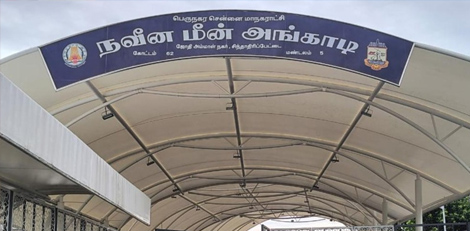Single Embryo Transfer is a Safe Option in Assisted Reproductive Technology (ART)
Posted on: 26/Apr/2019 11:52:36 AM

Nova IVI Fertility is effectively using Pre- Genetic Testing for Aneuploidies (PGT-A) and Pre-implantation Genetic Diagnosis (PGD) to help couples have a successful IVF cycle with a single embryo transfer
Highlights:
� Single Embryo transfer significantly reduces health risk for mothers which are otherwise associated with carrying multiple embryos
� Nova IVI Fertility has successfully achieved over 25,000 clinical pregnancies through IVF
Fertility treatments can be complex and often require patients to make many decisions along the way. Multiple pregnancy and its complications like second trimester miscarriage, preterm delivery, high blood pressures during pregnancy, low birth weight are one of the most common risks in infertility treatments. In Assisted Reproductive Technologies (ART), multiple births are largely due to the practice of transferring multiple embryos back into the uterus during in vitro fertilization (IVF).They are preventable by limiting the number of embryos transferred through eSET.
Elective single-embryo transfer (eSET) is a procedure in which one embryo, selected from a larger number of available embryos, is placed in the uterus. The embryo selected for eSET could be from a previous IVF cycle (frozen embryo) or from the current fresh IVF cycle that yielded more than one embryo. The remaining embryos may be set aside for future use by cryopreservation. Research suggests that transferring two embryos, where one is of good quality and the other being poor could result in a lower chance of achieving pregnancy.
Discussing the effectiveness of Single Embryo Transfer at a press meet held today, Dr Aruna Ashok, Fertility Consultant, NOVA IVI Fertility, Chennai said, �eSET helps women avoid several risks to their own health that are associated with carrying multiple embryos. It also helps families achieve success while preventing some risks known to be associated with giving birth to twins or what is called �high order multiple births�. Infants born in multiple births are more often born early (preterm), are smaller (low birth weight) and experience more adverse health outcomes than singleton infants. There is consensus among experts that the desired outcome of ART is a healthy singleton infant. Single Embryo Transfer has its success rate similar to Double Embryo Transfer. With eSET, the patient does not have the mortality or morbidity of a twin pregnancy. �
Having multiple embryos transferred will increase the odds of getting pregnant:
In the past, IVF patients have sometimes had to take risks and transfer multiple embryos to fix problems related to getting pregnant. But fertility treatments have improved greatly, so having one embryo transferred no longer means you�re less likely to be successful. For some women, transferring more than one embryo doesn`t increase the chance of getting pregnant, but it does increase the risk of a multiple pregnancy. If you are a good candidate for SET, you will have a similar chance of success having one embryo transferred as you would if you transferred two.
Choosing the right embryo
To pick the highest-quality embryo to transfer, the laboratory grades each embryo based on its appearance. This assessment includes looking at the number and size of the cells, the rate of development, and other factors. Different grading systems are used and may vary from clinic to clinic. Systems also differ depending on whether the embryo is being evaluated in the blastocyst stage.
�Various parameters need to be kept in mind while considering g eSET and should be offered to women who are good candidates to receive a single embryo instead of multiple. For instance, patients who have not succeeded in getting pregnant through IVF in the past and/or patients who are older than 35 years are not suitable for eSET, in some cases. However, freezing extra embryos and transferring in later cycles can give a comparable pregnancy rate without the risks associated with twinning. Additionally, with technologies like PGT-A and PGD, one can select the healthy embryos for eSET. The benefit in choosing eSET is a dramatic drop in multiple pregnancy rates�overall, twin rates after eSET are around 1%-2%. � added Dr Aruna Ashok.
Pre-Genetic Testing for Aneuploidies (PGT-A) and Pre-implantation Genetic Diagnosis (PGD)
Genetic abnormalities contribute up to 10 per cent of recurrent pregnancy losses in couples. Embryos with an incorrect number of chromosomes fail to implant or miscarry during the first trimester of pregnancy. Reproductive genetics help in screening the embryos and select the healthy embryo for implantation.
PGT-A is a last generation genetic test that allows screening for chromosomal abnormalities in embryos during an IVF cycle. All 24 types of chromosomes are analysed using PGT-A in order to detect aneuploidies (alterations in the number of chromosomes) which are the leading cause of miscarriages and implantation failure. All infertile couples are at risk for having abnormal embryos. The risk increases significantly as a woman gets older. An abnormal embryo almost always fails to implant, or even if it does, the pregnancy ends in a biochemical pregnancy, miscarriage, foetal death later in pregnancy, stillbirth or a baby with abnormalities.
PGD or Pre-implantation genetic diagnosis is a form of genetic testing exercised on the embryo cells produced during an IVF treatment cycle to know the genetic profile of the embryos. It is helpful in selecting the best embryos for pregnancy. Pre-implantation genetic diagnosis (PGD) refers specifically to when one or both genetic parents has a known genetic abnormality and testing is performed on an embryo to determine if it also carries a genetic abnormality.







